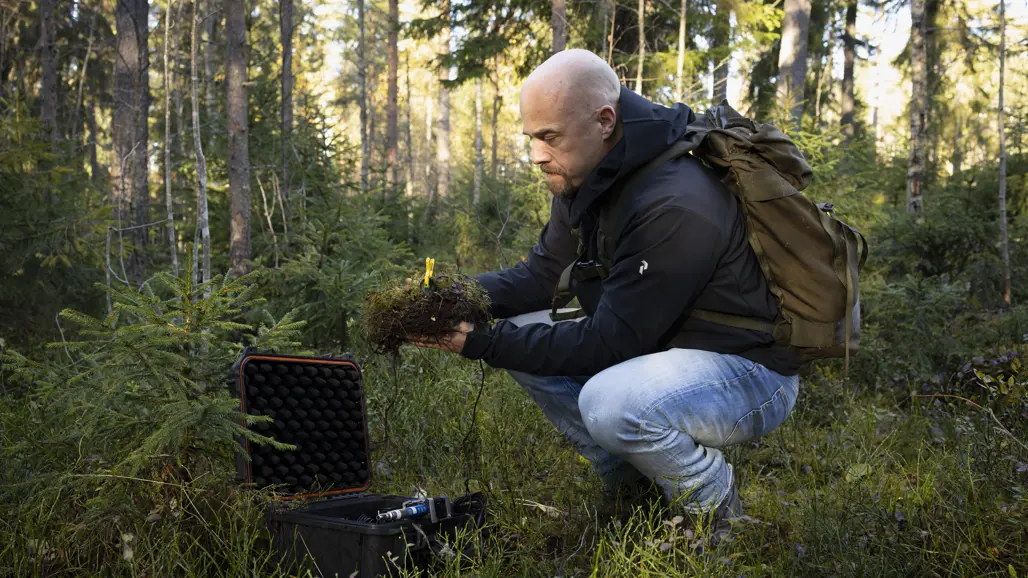
Microphones reveal when trees suffer from drought stress
Trees exposed to drought emit sounds – and with the help of microphones, researchers can now listen in as their water transport systems begin to fail. A new study from SLU shows that ultrasound from the forest can reveal whether trees are suffering from permanent drought damage.
The discovery could become a new tool for detecting climate stress in forests.
Drought is a well-known cause of tree death in forested regions across the world, and water shortage is a key factor behind tree mortality and reduced growth in Europe’s forests. The decline in growth in Swedish forests during the latter part of the 2010s has often been explained by the negative effects of drought periods. One central reason why trees fail to recover after drought is believed to be the formation of air bubbles in the xylem – which transports water upwards in the tree. This condition is called embolism and can be compared to blood clots in humans.
‒ Our study lays the foundation for developing a method that allows us to investigate when and why trees suffer from embolism during drought, says Jonatan Klaminder.
How the study was carried out
At a site near the Svartberget Research Station outside Umeå, the researchers selected 32 Christmas tree-sized trees, evenly split between birch and pine. The trees were cut and given either normal water (control group) or water treated to reduce its cohesive force – that is, the water's ability to hold its molecules together. This method triggered the formation of air bubbles in the trees' xylem.
Using microphones attached to and placed near the tree trunks, the researchers were able to listen for the sound of bubbles forming and measure their negative impact on the trees’ ability to take up water.
The technology isn’t new – but the researchers are breaking new ground
Acoustic methods have been used in plant studies since the 1980s, but only in laboratory environments or with the help of acoustic chambers. Previous attempts to use similar methods to detect when air bubbles form in the xylem of plants with intact bark in lab settings have failed – making this study, conducted in a natural forest environment, unique in its kind.
‒ We saw that trees in which we induced embolism emitted ultrasound more frequently and lost their ability to take up water, says Jonatan Klaminder. He continues:
‒ But even our control trees emitted some ultrasound, which is interesting since we don’t yet know why.
The pines that received the treated water emitted sounds from both the base and the upper part of the trunk, while the birches only emitted sounds from the base. This difference is likely linked to anatomical differences between the tree species, which influence where in the tree the water column in the xylem breaks and where bubbles form.
More research is needed
This study provides an important foundation for exploring drought stress in trees. This summer, the researchers will continue testing the method on new tree species, hoping to refine it and better understand the origin of the different types of ultrasound emitted by trees. The method will also be tested and evaluated on mature trees, where thicker bark poses a challenge for sound detection
In the long term, the method could be used as a tool for monitoring drought stress in forests.

Link to publication: Ultrasonic acoustic emissions as indicators of tree drought stress in outdoor forest settings: Testing the concept using cut saplings
Contact
-
PersonJonatan Klaminder, ProfessorDepartment of Forest Ecology and Management, joint staff
-
PersonTheres Svensson, CommunicatorFaculty of Forest Sciences